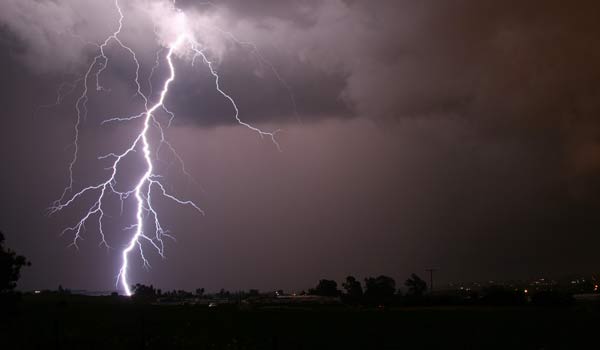Is It Possible to Have Lightning Without Thunder?

No, it is not possible to have lightning without thunder, according to NOAA.
Thunder is a direct result of lightning. If you see lightning but don't hear thunder, it is because the thunder is too far away. Sometimes, people refer to this as heat lightning because it most often occurs in the summer , but it is no different from regular lighting.
A lightning bolt can have 100 million to 1 billion volts of electricity, and contains billions of watts, according to NOAA. (Volts measure electrical potential how much energy you get per unit charge; watts are units of power and measure how much energy is transmitted per second.)
That amount of energy can heat the air between 18,000 degrees Fahrenheit (9,982 degrees Celsius) and 60,000 F (33,315 C).
What we see as a lightning strike actually comes from the ground up, according to NOAA. Typically, a cloud-to-ground flash lowers a path of (invisible) negative electricity towards the ground. Objects on the ground generally have a positive charge, and because opposites attract, an object about to be struck sends out an upward streamer.
When these two, oppositely-charged paths meet, they send a return stroke zipping back up to the sky. It is this return stroke that produces the visible flash.
But it all happens so fast - in about one-millionth of a second that the human eye doesn't detect the actual formation of the lightning bolt.
Get the world’s most fascinating discoveries delivered straight to your inbox.
- What is a Dry Thunderstorm?
- Do Planes Get Struck by Lightning?
- What Causes the Aurora?
Got a question? Email it to Life's Little Mysteries and we'll try to answer it. Due to the volume of questions, we unfortunately can't reply individually, but we will publish answers to the most intriguing questions, so check back soon.




